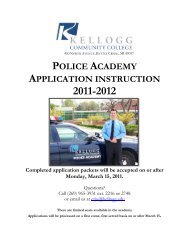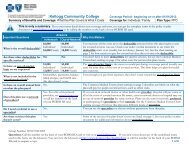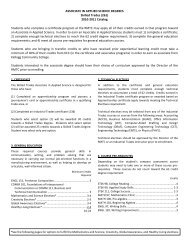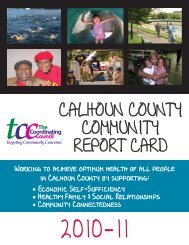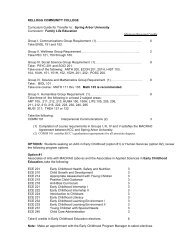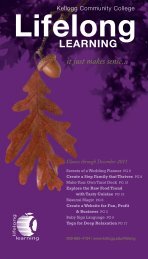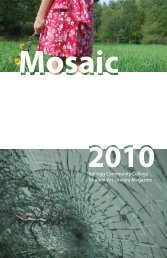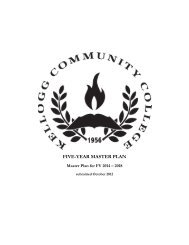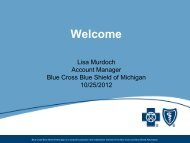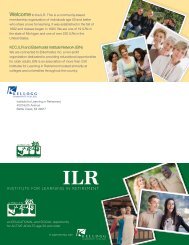Kellogg community college nursing student handbook
Kellogg community college nursing student handbook
Kellogg community college nursing student handbook
You also want an ePaper? Increase the reach of your titles
YUMPU automatically turns print PDFs into web optimized ePapers that Google loves.
Ensure that none of the distracters overlap. (Information in one answer should not be<br />
contained in another answer)<br />
Present the choices in a logical manner.<br />
Do not use “All of the above” or “None of the above”.<br />
On the NCLEX, calling a physician is NEVER an option because it is a <strong>nursing</strong> exam.<br />
Maintaining Security<br />
1. Lock up test bank CDs or printed exams while they are on-campus. Do not allow <strong>student</strong>s<br />
access to secure instructor web resources.<br />
2. Store paper-and-pencil exams and exam-keys in a locked area between duplication delivery<br />
and exam day.<br />
Administering an Exam<br />
All <strong>student</strong> possessions (backpacks, cell-phones, hats, etc.) must be left at the front/edge<br />
of the room. The <strong>student</strong> may have nothing but a pencil and highlighter and the <strong>college</strong>provided<br />
calculator during the testing period (which also includes collaborative testing).<br />
Students may have their own cough drops during an exam. Note cards and course<br />
materials/resources are not to be used during any exam (including collaborative<br />
testing).<br />
Students may have drinks during exams. The professor retains the right to examine all<br />
drink containers.<br />
Have a general dictionary (Webster) available for <strong>student</strong>s during the exam.<br />
The procedure for classroom exams will be as follows:<br />
Each <strong>student</strong> will take the exam and submit an individual scoring sheet. Once the<br />
scoring sheet is submitted to the faculty, nothing can be changed on it and it will be<br />
graded accordingly.<br />
Collaborative testing may be part of (a/any) <strong>nursing</strong> course. The professor determines whether<br />
collaborative testing will be conducted. When all <strong>student</strong>s have completed their individual exams,<br />
they will be placed in groups and re-take the exam as a group. Each group will be assigned one<br />
scantron sheet per group for scoring. Students must have a minimum score of 78% on their<br />
individual exam in order to be eligible for collaborative percentage points. Students scoring an A<br />
or A- on their group exam will earn 2 percentage points added to the <strong>student</strong>’s individual final<br />
exam percentage grade; <strong>student</strong>s scoring a B+, B, or B- will earn 1 percentage point added to the<br />
<strong>student</strong>’s individual final exam percentage grade; <strong>student</strong>’s scoring below a B- will earn no<br />
additional percentage points to their individual final exam percentage grade.<br />
Collaborative testing will include all alternate-type questions, including dosage<br />
calculations.<br />
Example: Scoring for courses using a percentage system<br />
Exam 60 questions<br />
Earned 49 questions correct<br />
= 81.66% final individual exam percentage grade<br />
Student earns any A on collaborative exam = 83.66% Final percentage exam grade (2<br />
percentage points added to the <strong>student</strong>’s individual final exam percentage grade)<br />
Student earns any B on collaborative exam = 82.66% Final percentage exam grade (1<br />
percentage point added to the <strong>student</strong>’s individual final exam percentage grade)<br />
Example: Scoring for courses using a points system<br />
Courses using a points system will need to covert the percentages to points<br />
Exam 60 questions<br />
Page 33 of 46



